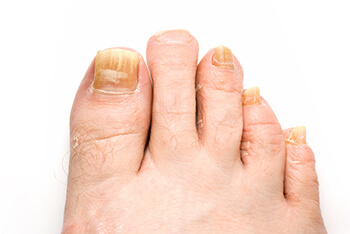
Onychomycosis, or fungal infection of the toenails, is a very common condition. The fungi that cause this infection live and thrive in warm and moist environments. Unfortunately, this makes the feet and toenails an ideal home for them. Toenail fungus is highly contagious and can be contracted from walking barefoot in places like public pools and communal showers, sharing personal items like towels and shoes, and coming into direct contact with an infected person.
Toenail fungus can change the appearance of the toenails. They may become thickened, brittle, or crumbly. The nails can also become discolored and turn yellow, white, or brown. They may begin to lift and separate from the nail bed and emit a foul odor. The infection is usually not painful unless it has progressed and become severe. People who have diabetes, poor circulation, a weak immune system, excessively sweaty feet, toenail injuries, or Athlete’s foot are at an increased risk of contracting toenail fungus and experiencing complications.
Toenail fungus can be treated through topical solutions, which are applied directly to the nail, oral antifungal medications, or laser treatment. In severe cases where the infection has progressed or is recurring, surgery to remove some or all of the infected nail may be necessary. If you have toenail fungus, please consult with a podiatrist who can find the right treatment for you.